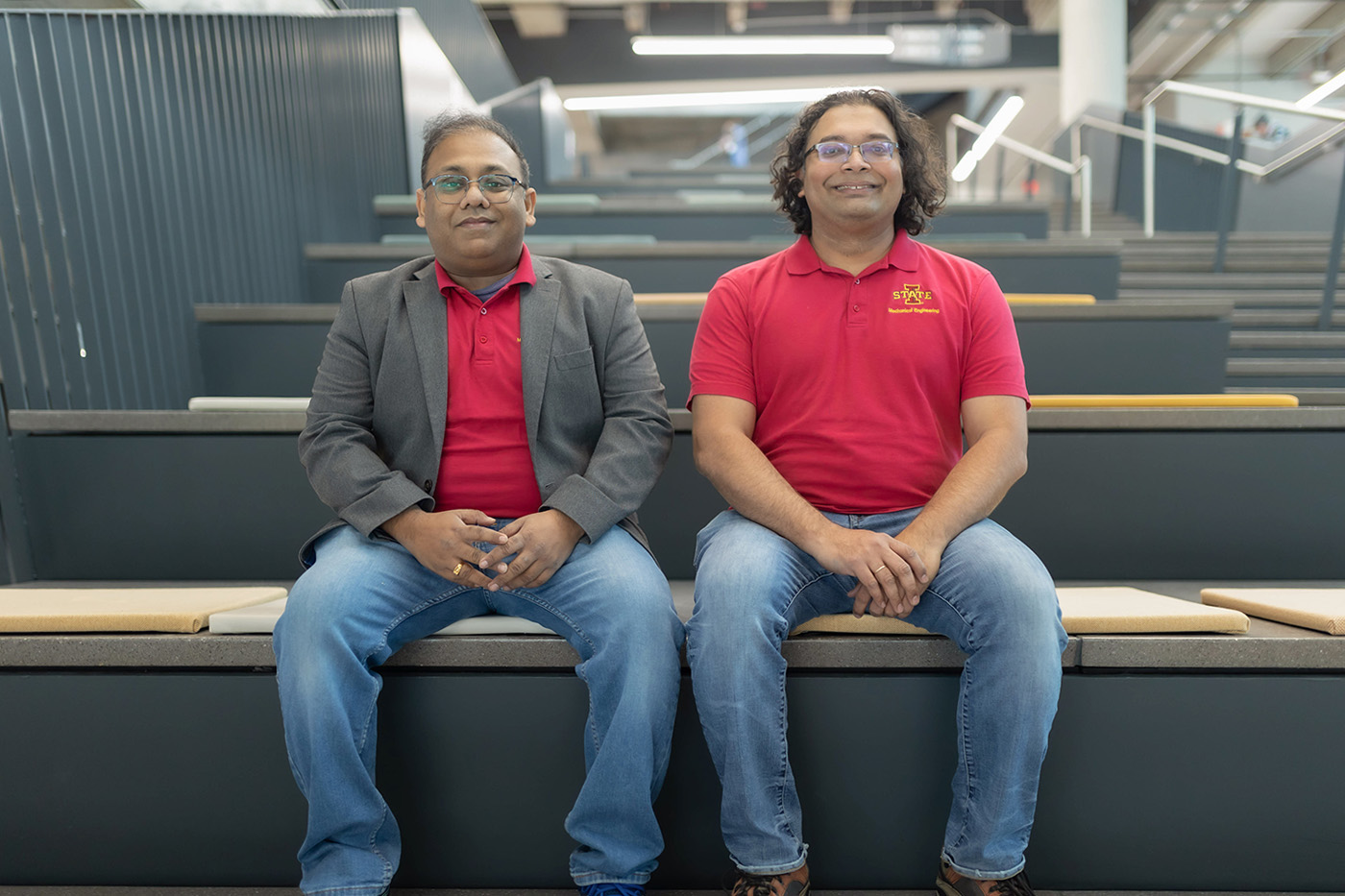
(Photo: Joclyn Bushman/Iowa Soybean Association) Soumik Sarkar and Baskar Ganapathysubramanian
Investing in Artificial Intelligence
March 15, 2022 | Kriss Nelson
New projects bring AI to tackle crop production issues
Artificial intelligence (AI) technologies are becoming essential components for many uses, such as self-driving cars, virtual travel, medical assistants, manufacturing robots, smart home appliances and phone apps.
AI uses computers to make complex decisions or do things historically done by humans. The heart of AI is software that processes, identifies, learns and draws predictions from data.
The Iowa Soybean Association (ISA), in collaboration with Iowa State University (ISU) and other partners, is playing a role in two new projects focused on utilizing AI technologies in crop production.
“AI technologies are coming to agriculture,” says Peter Kyveryga, ISA senior research scientist of analytics. “Specifically, these projects will explore the use of AI to evaluate crop statuses as well as facilitate robust and rapid economic and agronomic responses to crop stresses at ultra-small scales, including individual plants.”
Both projects are funded by the National Science Foundation (NSF) and the USDA’s National Institute of Food and Agriculture.
AI’s projects
ISA is a funded partner for the Artificial Intelligence Institute for Resilient Agriculture (AIIRA) and the Contex Aware Learning for Sustainable Cyber-agricultural systems (COALESCE) projects.
“With access to a large number of farmer members, ISA is a unique and important part of these project teams, which mostly comprise academic researchers,” says Soumik Sarkar, ISU associate professor of mechanical engineering.
ISA’s primary role is helping the research team identify important technical problems and disseminate the research outcome knowledge among farmers.
“ISA researchers will help in connecting with growers, understanding and overcoming the adoption barriers for the AIIRA and COALESCE technologies,” says Baskar Ganapathysubramanian, the Joseph C. and Elizabeth A. Anderlik Professor in Engineering at Iowa State University.
Kyveryga says ISA staff will provide feedback to the modeling effort by testing the modeling results and assisting with interpreting on-farm trial results.
“ISA plans to develop dynamic interactive decision tools or summaries to help inform farmers about these technologies as well as sharing results through articles and other media,” says Kyveryga. “We will help train agronomists and farmers to use this type of system while using their feedback to identify areas for improvement.”
AIIRA
AIIRA is one of the 18 national AI institutes recently established by the NSF and its partner agencies. AIIRA, which is based at ISU, began on Sept. 1, 2021, and is a five-year project.
“The core research vision is to develop AI-driven digital twin technology to increase the resiliency of U.S. agriculture from breeding to production,” says Ganapathysubramanian.
In addition to employing digital twinning, AIIRA uniquely includes knowledge of modern plant genetics, which are generally proprietary and subject to frequent changes, in modeling agronomic systems and making agronomic decisions.
Learn more about AIIRA at https://aiira.iastate.edu/.
COALESCE
COALESCE is a recently awarded NSF Cyber-Physical Systems (CPS) Frontier project, which began on April 15, 2021.
“This is a five-year project to develop new CPS technologies involving machine learning and robotics for ultra-precision row crop production systems,” says Sarkar. “A key objective is to make production agriculture more environmentally sustainable.”
The uniqueness of the COALESCE project centers around simultaneous use of multiple agronomic systems and machine learning models, paired with highly specific data collection methods, such as small robots, drones and sensors; data transfer and networking technologies (internet of things).
“There is an emphasis on training agronomists along with farmers in this approach and refining decision making,” says Kyveryga. “The COALESCE project brings concepts of cyber-physical systems, for example, integrating physical systems with their virtual counterparts to improve agronomic efficiency.”
For more information about COALESCE visit https://coalesce.me.iastate.edu/.
Digital twin modeling
Both projects will build and use the digital twin modeling approach in complementary ways.
This approach has been successfully used in engineering and medicine, where a digital twin, a virtual copy or replica of an object, can explore various management and operating conditions in a risk-free environment.
“For example, in medicine, a digital twin of a heart is used to better predict heart problems before they occur and develop more effective prevention strategies and treatments,” says Kyveryga.
No two plants face identical challenges within a farmer’s field since each competes for available resources, which vary across the acres.
“A digital twin model of a field, created using new sensing technologies, will try to mimic this variability in water and nutrient supply, competition for those resources and other stresses at the individual plant level for each day or even hour,” says Kyveryga. “This digital twin will enable diagnosis and correction of small-scale plant environments so inputs can be targeted to increase productivity with minimal costs.”
Back